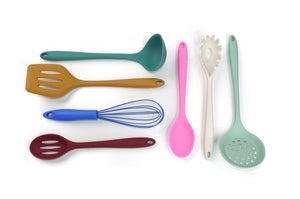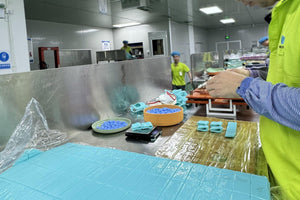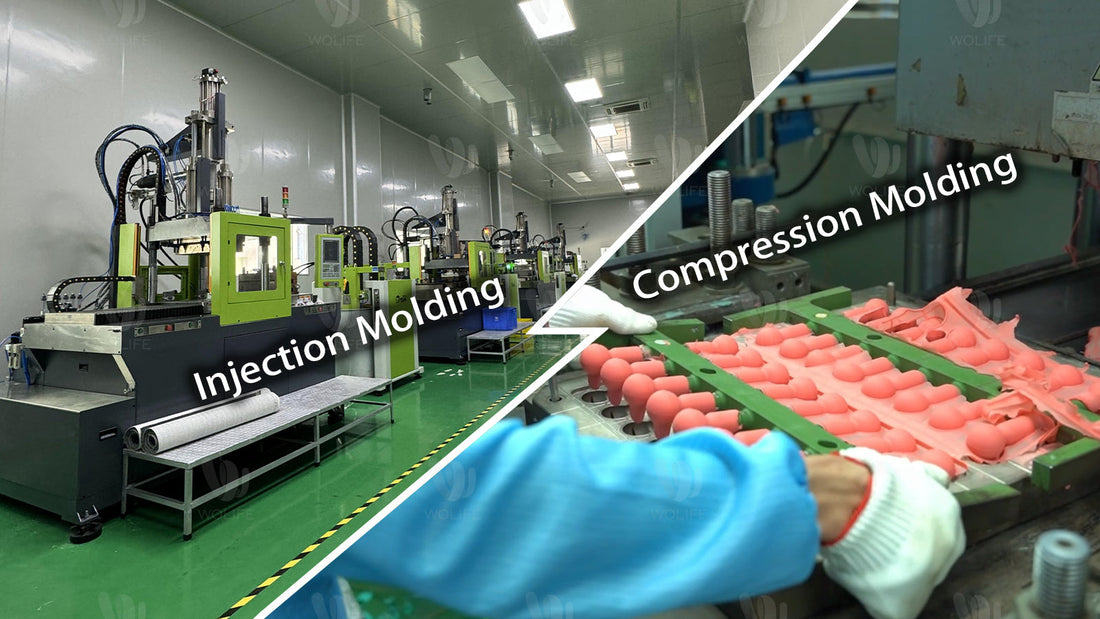When it comes to manufacturing silicone or plastic components, injection molding and silicone compression molding are two primary processes widely used in the industry. Both techniques have unique advantages and applications, making it essential to understand their differences to choose the right method for your specific project.
In this blog, we’ll break down each process, highlight their key differences, and discuss which one might be best suited for your manufacturing needs.
What Is Injection Molding?
Injection molding is a widely used manufacturing process that involves injecting molten material, such as plastic or liquid silicone rubber (LSR), into a mold cavity at high pressure. Once the material cools and solidifies, the finished part is ejected, and the process can be repeated for high-volume production.
How It Works:
-
The raw material (pellets or liquid silicone) is heated until it becomes molten.
-
The molten material is injected into a closed mold under high pressure.
-
The mold cools, allowing the material to solidify into the desired shape.
-
The finished part is ejected, and the process repeats.
Key Characteristics of Injection Molding:
-
High Efficiency: Ideal for mass production due to short cycle times.
-
Precision and Complexity: Capable of creating highly detailed and intricate designs.
-
Automation-Friendly: Processes are often automated, reducing labor costs.
-
Material Versatility: Suitable for a variety of materials, including thermoplastics, silicone, and rubber.
What Is Silicone Compression Molding?
Silicone compression molding is a traditional molding process used primarily for manufacturing silicone products. In this method, a pre-formed silicone material (often called a "slug"), is placed into an open mold cavity, and the mold is closed and compressed under heat and pressure. This causes the silicone to flow and take the shape of the mold.
How It Works:
-
Pre-formed silicone material is placed into the mold cavity.
-
The mold is closed, and pressure is applied to compress the material.
-
Heat is introduced to cure the silicone and solidify the part.
-
The finished part is removed from the mold.
Key Characteristics of Silicone Compression Molding:
-
Low Tooling Costs: Tooling for compression molding is often simpler and less expensive.
-
Suitable for Low-Volume Production: Ideal for prototypes or small-batch production.
-
Material Optimization: Works well with silicone materials that require curing.
-
Thicker Parts: Better suited for manufacturing thicker or larger parts with uniform wall thickness.
Key Differences Between Injection Molding and Silicone Compression Molding
| Aspect | Injection Molding | Compression Molding |
| Production Volume | Ideal for high-volume production | Better for low to medium production volumes |
| Tooling Cost | Higher initial tooling cost | Lower tooling cost |
| Cycle Time | Shorter cycle times, faster production | Longer cycle times |
| Design Complexity | Allows intricate and complex designs | Limited to simpler shapes |
| Material Waste | Minimal material waste due to precision | Slightly higher material waste |
| Part Size and Thickness | Part Size and Thickness | Suitable for thicker and larger parts |
| Initial Investment | Higher due to advanced tooling and automation | Lower due to simpler equipment |
| Precision and Repeatability | Excellent precision and repeatability | Moderate precision, depending on process |
When to Use Injection Molding vs. Silicone Compression Molding
-
Choose Injection Molding If:
-
You require high-volume production of parts.
-
The product design is intricate or requires tight tolerances.
-
You need consistent precision and repeatability.
-
Automation and efficiency are priorities for your production.
-
-
Choose Silicone Compression Molding If:
-
You are producing low to medium volumes or prototypes.
-
Your product design is relatively simple or has thicker geometries.
-
You are looking for lower initial costs with minimal tooling investment.
-
The material used is silicone requiring curing under heat and pressure.
-
Conclusion
Both injection molding and silicone compression molding play critical roles in modern manufacturing, but the choice between the two depends on factors such as production volume, cost considerations, design complexity, and material requirements.
If you’re aiming for high-volume production with precise details, injection molding is the superior choice. On the other hand, for smaller production runs, simpler designs, and cost-effective tooling, silicone compression molding offers significant advantages.
At Wolife, we specialize in both injection molding and silicone compression molding, helping clients choose the best solution for their needs. Contact us by sales@wolife.international today to discuss your project, and let our experts guide you through the manufacturing process!
About Author
We are dedicated to pushing the boundaries of possibility in silicone product manufacturing and our extensive range of inhouse designs and molds across baby, pet, homewares and more allows companies to customize and create products specific for their brand and market needs.
Whether you are looking for a company to bring your ideas and brand to life or looking for ready to go items with packaging and branding, WOLIFE is ready to help your business grow.
WOLIFE looks forward to collaborating with you!


 Using LSR in Hearing Components
Using LSR in Hearing Components Why Silicone Cooking Utensils and Baking Trays Don’t Melt – The Science Explained
Why Silicone Cooking Utensils and Baking Trays Don’t Melt – The Science Explained 10 Creative Products You Didn’t Know Could Be Made with Silicone
10 Creative Products You Didn’t Know Could Be Made with Silicone Common Quality Control Challenges in Silicone Manufacturing
Common Quality Control Challenges in Silicone Manufacturing